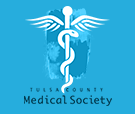Androstenedione - Did it help Mark McGwire?
Sports performance-enhancing drugs are widely abused. More than one million Americans have taken anabolic-androgenic steroids (AAS). One fourth of these users are teenagers. In 1990, the Anabolic Steroids Control Act classified AAS as schedule III controlled substances; which means that these drugs are more difficult to obtain, since they are classified at the same level as narcotic medication. Androstenedione however, is not under FDA restrictions, since it occurs naturally in Mexican yams and Scotch white pine. Androstenedione is now unrestricted in the United States in accordance with the 1994 Dietary Supplement Health and Education Act (DSHEA), but is it really a great sports-enhancing drug?
Androsenedione has been promoted as a natural testosterone booster as well as a "legal source" of testosterone. Increased testosterone levels in the body lead to greater muscle mass and strength gains in athletes and nonathletes. Mark McGwire became a Baseball hero in 1998 when he broke Roger Maris’ home run record. During the season, the hero announced that he used androstenedione (or andro) and this skyrocketed sales. In August 1999, Mark McGwire announced that he stopped taking andro. Mark McGwire has been criticized for not warning kids about the potential dangers.
Androstenedione is produced in the adrenal glands and gonads. It is one part of the complex network of steroid hormones being converted to testosterone and estrogen. Body building steroids have anabolic and androgenic effects on the body. Anabolic effects include increase in muscle mass, physical aggressiveness and decreased body fat. Androgenic effects are exaggerated male characteristics and these are viewed by athletes as undesirable. Chemists have not been able to separate the androgenic effects from the anabolic effects. All AAS retain some androgenic activity. Androstenedione, unlike other AAS, has weak direct anabolic-androgenic activity.
In the 1960s East Germany sports authorities conducted research that led to an androstenedione nasal spray. This was based on research that showed short term competition, relying on the spray’s short-term duration to avoid detection. After the fall of the Berlin Wall, this research was commercialized, resulting in a German patent for androstenedione.
The first randomized controlled trial of oral androstenedione was by DS King in 1999. Healthy adult athletes were tested after receiving 100mg of androstenedione or placebo. Blood levels of testosterone, estrogen and other hormones were checked. The athletes were also tested in a supervised weight lifting program. Resistance for each muscle was set at 80-85 % of a one-repetition maximum. There were no significant differences in the two groups in overall body composition, muscle strength and muscle fiber analysis. Androstenedione did not increase serum testosterone concentrations. It was concerning that estradiol and estrone were increased in all subjects taking androstenedione. Although no adverse effects were reported, the increased estrogen levels have been known to cause gynecomastia (enlarged breasts) and increased risk of pancreatic cancer. Androstenedione has been associated with increased prostate cancer and hirsutism (increased hair).
In summary, androstenedione neither increases serum testosterone concentrations nor enhances the strength gains of resistance training. Androstenedione is banned by the NFL, NCAA and the International Olympic Committee. The Association of Professional Team Physicians has recommended that androstenedione should be banned from all competitive sports and should be taken off the market.







